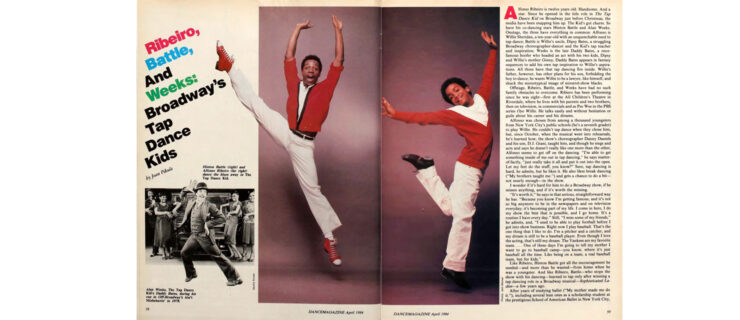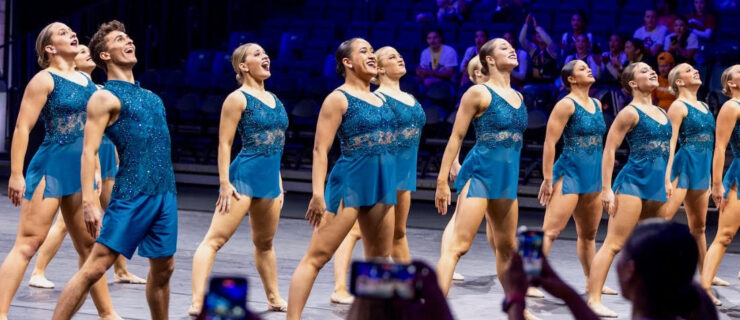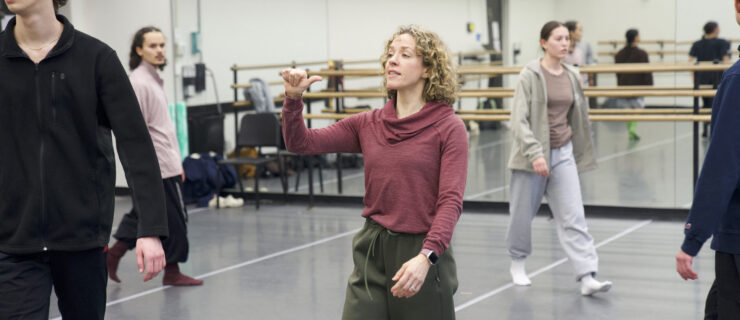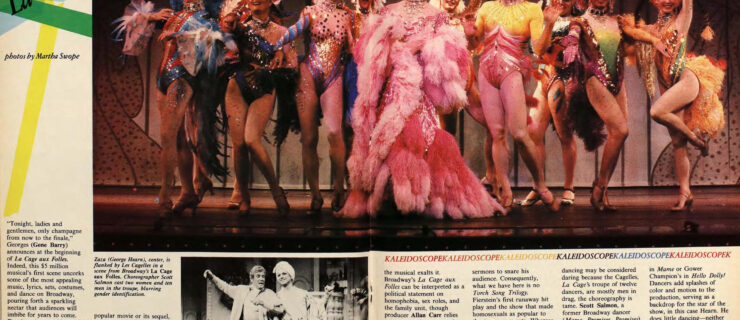Alice Unbound
Forget everything you thought you knew about Alice in Wonderland. Frank Wildhorn’s latest musical, Wonderland, which starts previews this month, gives the classic a new twist, with a grown-up Alice going down the rabbit hole—this time to retrieve her missing daughter. She’s greeted, Broadway-style, by a kick-line of Alices in the iconic blue dress and white apron. But Lewis Carroll’s more whimsical characters look less familiar. The Cheshire Cat has become El Gato, with a distinctly Spanish accent. The caterpillar is now a sexy black dude, legs courtesy of six sinuous dancers. The Mad Hatter is female. And the White Knight is the poster-ready leader of a boy band.
For Marguerite Derricks, it’s “a choreographer’s dream. There’s so much dance, and it ranges from ballet to salsa to quirky jazz,” she says. “The music for each character has its own personality, and I’m giving a style to each one.” She’s included traces of the Kurt Jooss ballet The Green Table and the movie The Red Shoes, lots of her trademark slinkiness, and a seriously mad Mad Tea Party, with 24 “wild and crazy” dancers. “On a lot of shows, there’s a style you have to stay true to,” she says. “This is a playground, and I’ve really been able to show so many different sides of myself.”
There are plenty of sides, starting with the ballet training she began at 5 in Buffalo, New York, with Bernadine DeMike. She won scholarships for summer stints at Canada’s National Ballet School and the School of American Ballet. And 30 years ago, at 20, she moved to New York to get a ballet job. It didn’t happen: “I was 5′ 3″. I wasn’t the body type.” She started auditioning for Broadway shows. That didn’t go well either: “I wasn’t blessed with the gift of a voice,” she says.
The dance career she had dreamed of since childhood was looking more and more unattainable. Then she got a call from a friend: “Debbie Allen is holding an audition tomorrow.” Derricks showed up to find 150 others and one open slot on the TV series Fame, based on the 1980 movie. “I danced my heart out,” Derricks says, “because I knew it was the only way.” She got the gig and moved to Los Angeles, promising herself, “I’ll do one season, and then I’ll come back to New York.”
That didn’t go according to plan either. She got married and had a baby. By the time her maternity leave was over, the marriage had foundered and she was a single mother. She was grateful to Allen for hiring her—at least she could play a ballerina even if she couldn’t be one—and for allowing her to return to the show. “But when I came back,” she recalls, “there was something inside of me: ‘I have to do more. I can’t be just a dancer.’ I needed to step it up, because I had a son to take care of. So I started choreographing.”
There was plenty of work available on music videos, commercials, and other one-shot projects. By 24, she had quit dancing and was a full-time choreographer. Her first movie gig was a comedic duet for Emma Thompson and Arnold Schwarzenegger in Ivan Reitman’s 1994 Junior—she had met the director when she choreographed his daughter’s bat mitzvah celebration. Her next films were Showgirls and Striptease. “And then came Austin Powers,” she says, “and my whole life changed.”
The signature Austin Powers dance, a skewed, slightly dorky rendition of Hullabaloo-style go-go moves, is all over the web, performed not just by Mike Myers as the uber-cool prince of spies but by all sorts of fans in all sorts of contexts. It’s a testament not only to the popularity of the movies but to the wit and infectiousness of Derricks’ work. There’s no more Oscar for film choreography, but her efforts elsewhere have won her Emmy Awards and MTV Awards, and last year the judges of the Fred and Adele Astaire Awards (I’m one of them) honored her for the 2009 remake of—what else?—Fame.
The road to Wonderland began when she worked with Wildhorn on the 1998 Goodwill Games opening celebration (which won her one of those Emmys), and she has been part of the musical’s creative team from the initial workshops. Although she’d been offered New York shows before, the timing was never right. Technically, she made her official Broadway debut in 2001, re-choreographing A Class Act when it moved from off-Broadway. But Wonderland is her first top-to-bottom big-time musical. She was not impressed with some of the New York dancers she auditioned for the first production, in Tampa, and she hired many from Los Angeles. But, she says with a laugh, “the divas came out” for Broadway, and she’s revised her assessment of the New York talent pool. They’re “quite fabulous,” she says. “And they sing!”
Sylviane Gold writes on theater for
The New York Times.
Wonderland‘s Tampa cast with Jose Llana as El Gato and Janet Decal as Alice. Photo by Michal Daniel, Courtesy Wonderland.




